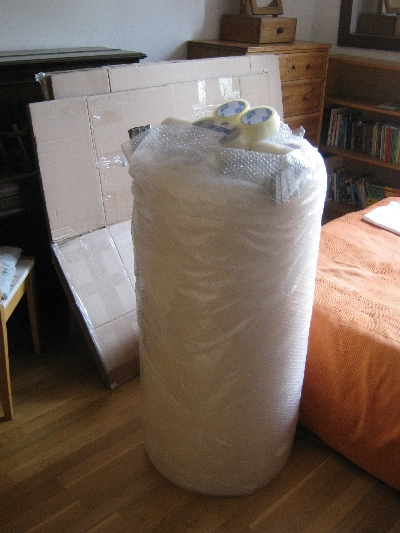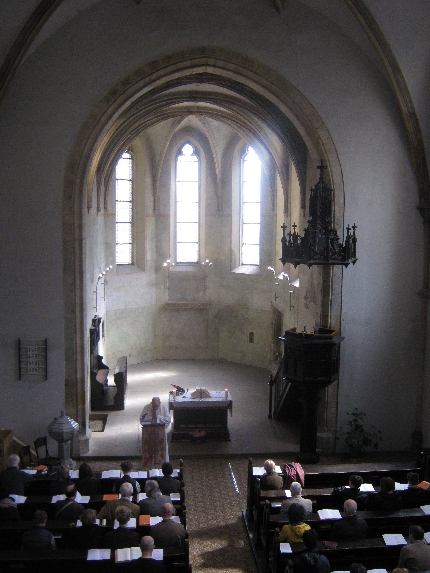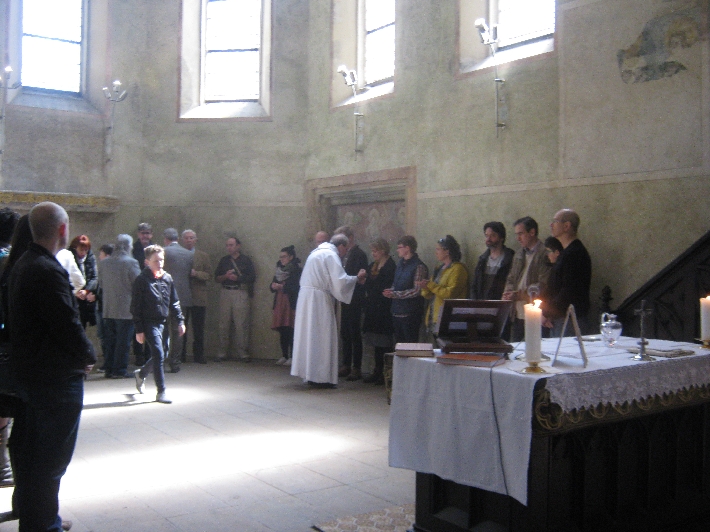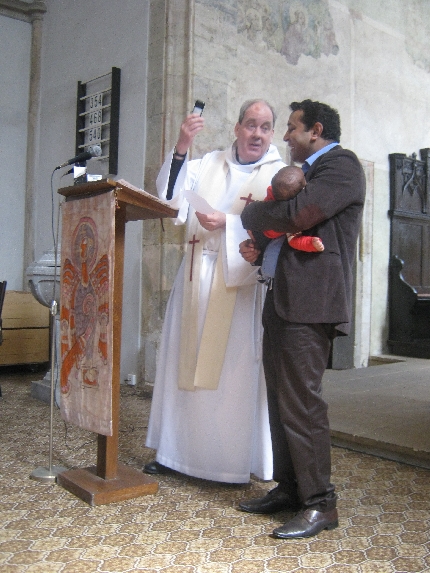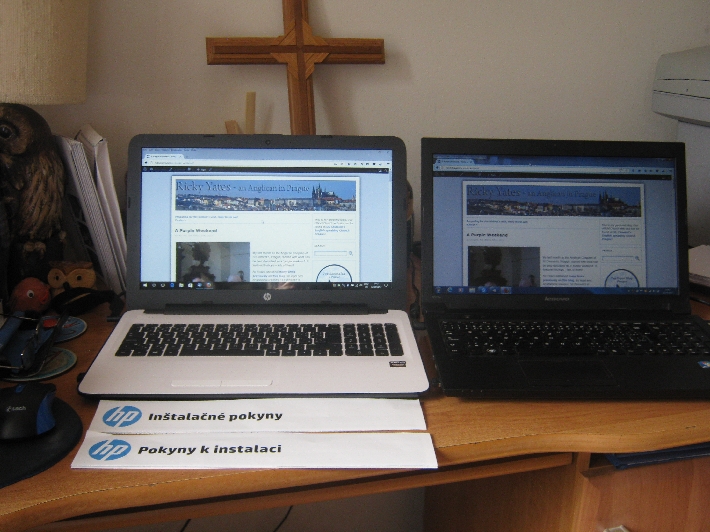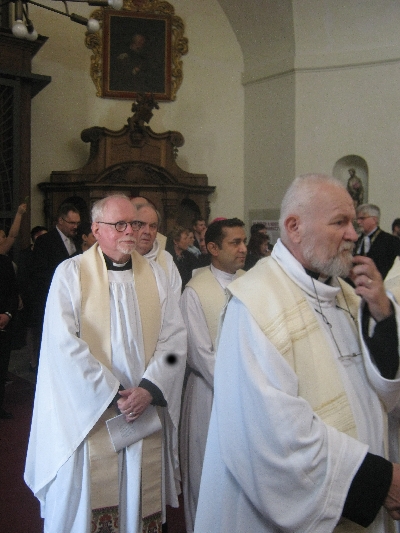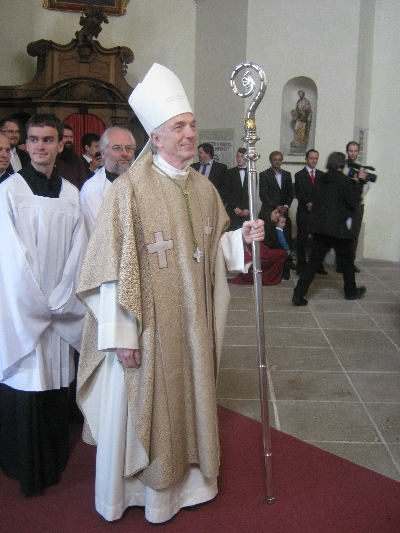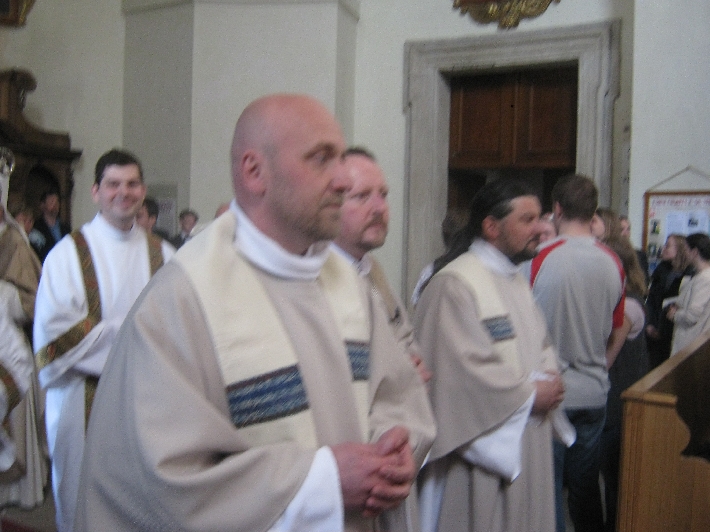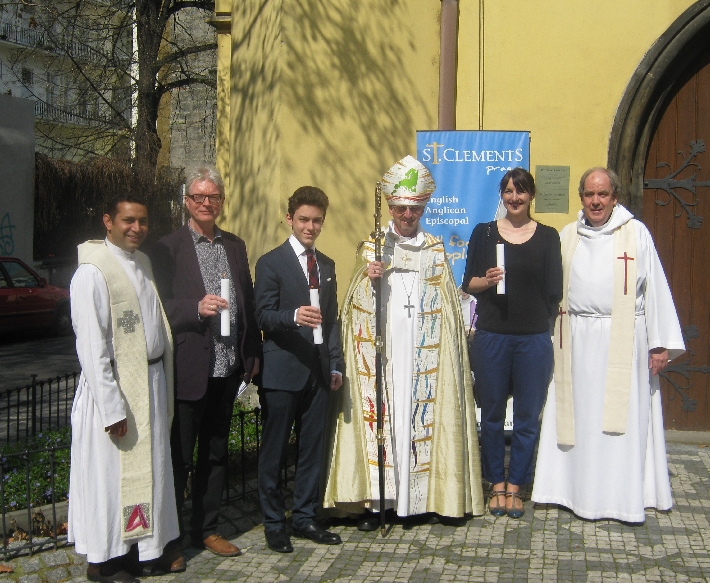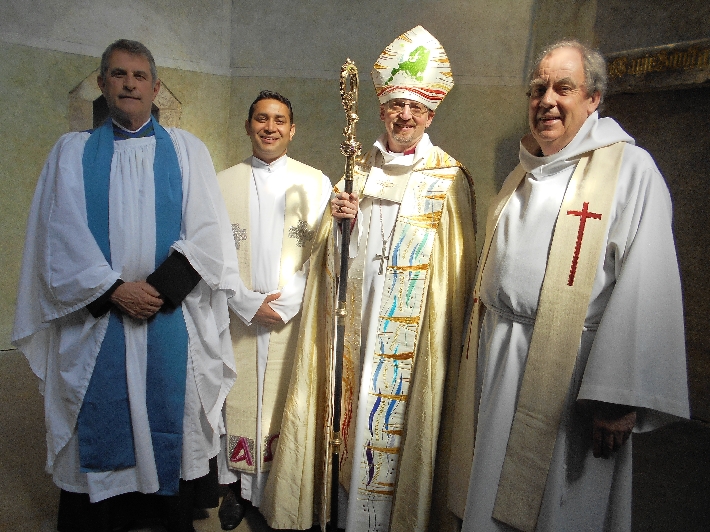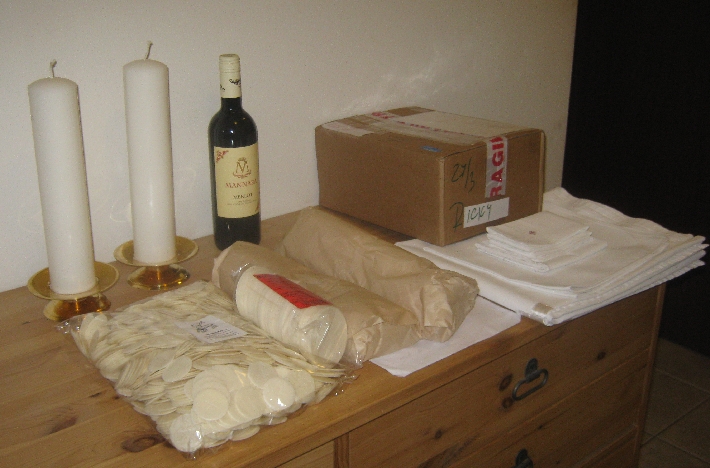
Ever since I announced that I was going to retire as the Anglican Chaplain in Prague and move to live near the Czech-German border, I’ve been asked both, whether this blog would continue, and if so, would there be a new header and tag line. This post is a definitive answer to both questions.
Whilst we currently are still living in Prague – we don’t move to the new house in Stará Oleška until Monday 15th May, I decided this evening, to ask Sybille to upload the new header that she had created at my request some days previously, in anticipation of the forthcoming change.
The new header is a combination of two photographs of mine. On the left is the gorge through which the Labe river flows north of Decín, on its way to cross the border with neighbouring Germany, where it becomes the Elbe river. On the right is the skyline of Dresden, featuring the prominent dome of the Frauenkirche.
The aim is to reflect my life over the next few years. I shall be living in Ústecký kraj, North Bohemia, but continuing in my role a coordinator of English-Language Anglican worship in Dresden, Saxony, or Freistaat Sachsen auf Deutsch.
Getting the new header uploaded and writing this new blog post, is a nice distraction to the current major task in hand. On Monday 1st May, sixty cardboard boxes were delivered to the Chaplaincy Flat, along with a massive roll of bubble-wrap and several rolls of wide sticky tape. Yesterday & today have been two solid days of packing boxes, together with separating what belongs to the Chaplaincy from what belongs to us.
We’ve made good progress, but my sixty-five year old body is aching! This evening, I also discovered a rather large bruise on my right arm, presumably where I banged myself carrying a heavy box. This is an inevitable consequence of permanently taking Warfarin following my pulmonary embolism in August 2015.
I do hope that everyone who has enjoyed this blog for the past eight years, as I have reflected on my life in Prague and my travels further afield, will continue to visit and also hopefully comment, as I move into a new phase in life. No longer am I ‘An Anglican in Prague’ but instead, ‘An Anglican in Bohemia and Saxony’.
